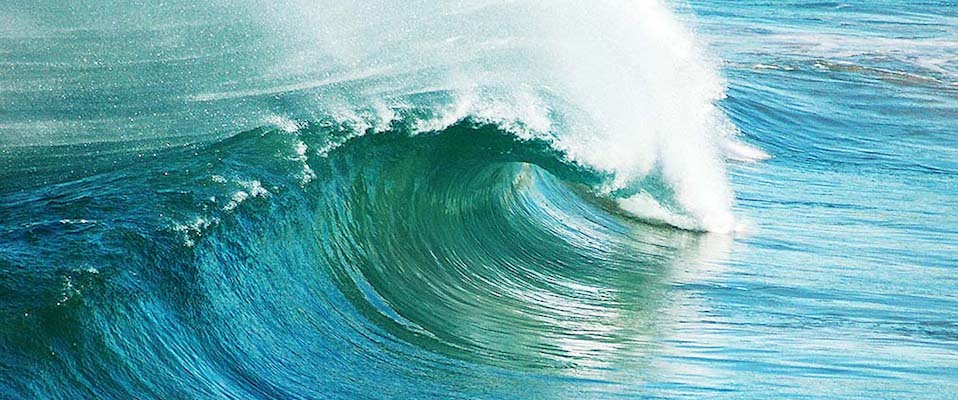If you’ve ever been knocked over by a breaking wave, you’ve felt the ocean’s power, but did you ever imagine it could be turned into electricity?
According to the U.S. Department of Energy (DOE), waves, tidal currents, and thermal gradients along American coastlines could potentially generate some 2,640 terawatt-hours (TWh) a year. That’s more than half the total U.S. production—enough to power as many as 200 million American households—emissions free.
To help realize some of that potential, a team of engineers called CalWave, working closely with UC Berkeley’s Theoretical and Applied Fluid Dynamics Laboratory, has developed a “wave carpet” invented by Berkeley engineering professor Reza Alam. A scale prototype of the carpet, which acts like a seafloor, absorbing wave impact energy, is housed on campus in Hesse Hall. It looks like an underwater boardwalk that undulates inside a wave tank.
Wave energy is the third-largest renewable resource after wind and solar
The carpet sits atop a series of double-acting piston pumps. CalWave project lead Marcus Lehmann explains that when “the waves run over the carpet, the carpet adopts the wave motion,” which in turn runs the pumps. They generate hydraulic pressure that gets sent into a discharge pipe, which brings the pressure onshore to convert it into electricity.
Last November, CalWave received a prestigious $500,000 cash award from the Department of Energy to continue research and development.
Wave energy is the third-largest renewable resource after wind and solar, but Lehmann points to several advantages, including much higher power density, better predictability, and proximity to consumers. As Lehmann notes, “half of the U.S. population lives within 50 miles of the coastlines.”
Wave energy could also be a boon for desalinating seawater, a viable but energy-intensive process. And wave carpets, unlike wind turbines and large solar arrays, would have minimal impact on the scenery.
Marine energy is still the kid brother of renewables, but it is growing quickly. In February 2015, Australia switched on the world’s first grid-connected wave power plant, the Perth Wave Energy Project; and a power company in Scotland has installed an offshore tidal station comprising three 100kW turbines that feed electricity to local homes. Meanwhile, wave power projects are surging off the coasts of Oregon, Hawaii, and New Jersey.
What’s next for CalWave? In 2015, the University of California filed a utility patent for the wave carpet, and the team is currently in preparations to test a deep-water device they developed in the competition. The DOE prize will help fund this endeavor. “The great advantage of our design is that we can upscale to any size we want,” says Lehmann, “so, depending on the wave climate and location, we can design perfectly according to environmental conditions.”



















